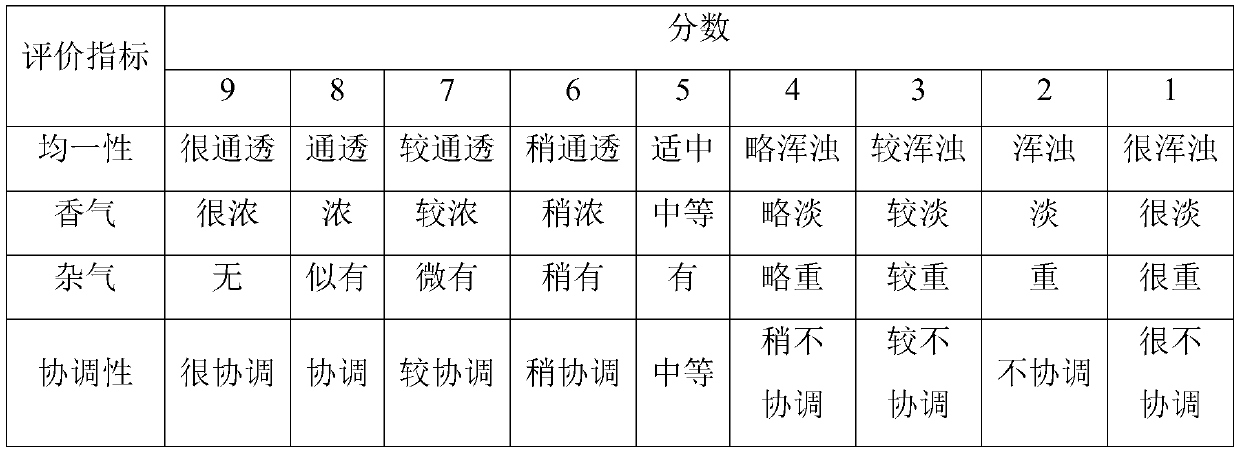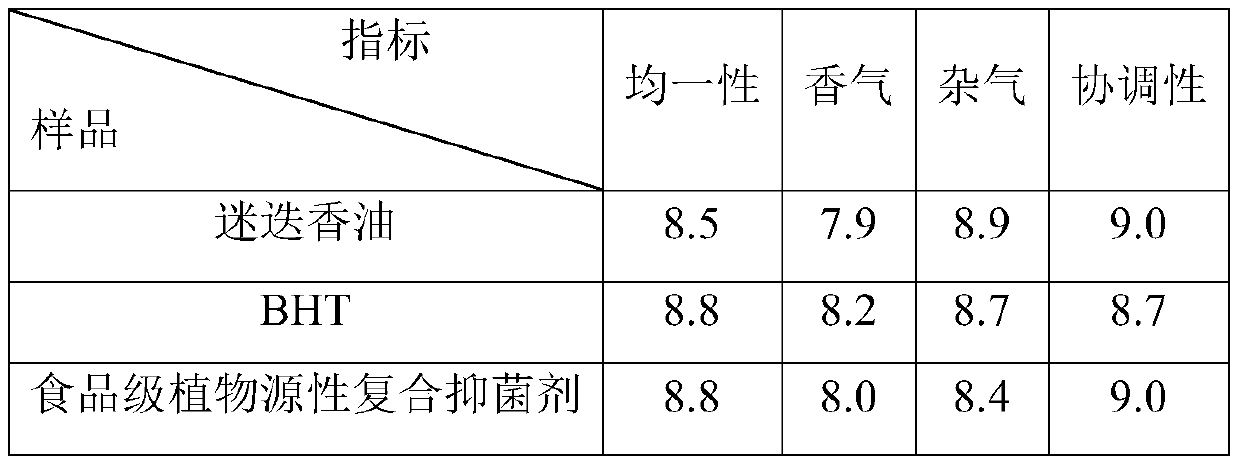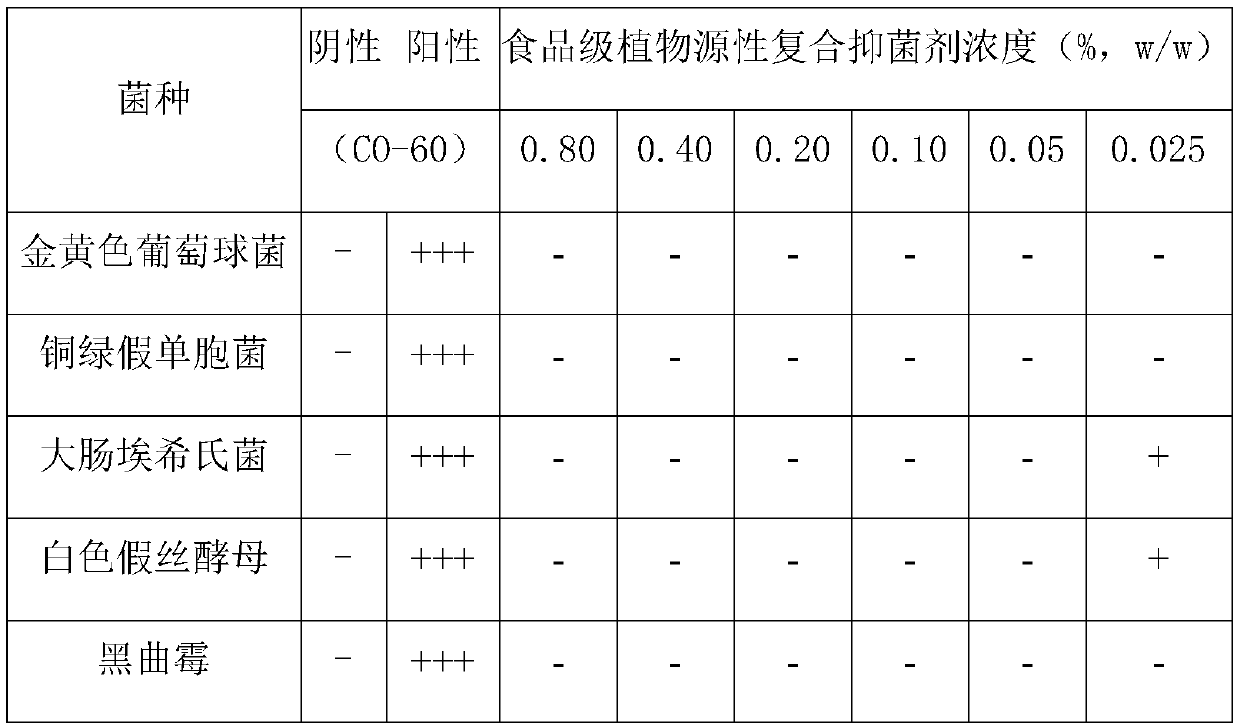Application of food-grade plant-source composite bacteriostat to baked products
A plant-derived, food-grade technology, applied in the fields of application, baked food, food science, etc., can solve the problems of poor food sensory, short shelf life of chemical preservatives, etc., to inhibit the growth of microorganisms, avoid bad sensory effects, and add a small amount Effect
- Summary
- Abstract
- Description
- Claims
- Application Information
AI Technical Summary
Problems solved by technology
Method used
Image
Examples
Embodiment 1
[0020] The preparation method of food-grade plant-derived compound antibacterial agent:
[0021] (1), preparation of the plant extract containing cinnamaldehyde: steam distillation method gets 60kg ground fine cinnamon bark powder, puts into the flask, adds 160L of water, installs condenser, heats and refluxes for 10min. After cooling, pour it into a distillation bottle for steam distillation, and collect 80-100L of distillate;
[0022] The distillate was transferred to a separatory funnel and extracted twice with 40 L portions of ether. Discard the water layer, transfer the ether layer into a small test tube, add a small amount of anhydrous sodium sulfate to dry, pour out the extract after 20 minutes, and evaporate the ether in a water bath in a fume hood to obtain a plant extract containing cinnamaldehyde;
[0023] (2), prepare the plant extract containing eugenol: take 15kg of clove flower buds, add water 90L after soaking in a distillation bottle, directly heat and carry ...
Embodiment 2
[0060] The specific method of using food-grade plant-derived compound antibacterial agent to prepare cakes is:
[0061] Preparation: use 23g flour, 20g eggs, 10g edible oil, 5g white sugar, 2g salt and 40g stuffing;
[0062] Preparation of cakes: ①. Dough making: Mix the food-grade plant-derived compound antibacterial agent with flour, eggs, edible oil, white sugar and salt, then add water to knead the dough to obtain the dough; ②, Filling: make filling Add food-grade plant-derived compound antibacterial agent and stir-fry; the addition of food-grade plant-derived compound antibacterial agent in the dough is 0.07% of the dough quality, and food-grade plant-derived compound antibacterial agent in the stuffing The amount added is 0.07% of the filling mass; the above is used as the experimental group.
[0063] Wherein, in the experimental group, the addition of the food-grade plant-derived compound antibacterial agent in the dough is adjusted to be 0.04% of the dough quality, an...
Embodiment 3
[0077] The specific method of using the food-grade plant-derived compound antibacterial agent to prepare cakes is:
[0078] Preparation: 50g flour, 30g eggs, 5g white sugar, 5g edible oil, 10g hydrogenated vegetable oil;
[0079] Cake preparation: the finished cake is obtained through egg beating, dough mixing, injection molding, baking and decoration in sequence. The food-grade plant-derived compound antibacterial agent is added in the dough mixing process, and the amount of the food-grade plant-derived compound antibacterial agent is 0.08% of the total mass of the cake raw materials. above as the experimental group.
[0080] Wherein, in the experimental group, the added amount of the food-grade plant-derived compound antibacterial agent was adjusted to be 0.04% of the total mass of the cake raw materials, and the cake was prepared.
[0081] Wherein, in the experimental group, the added amount of the food-grade plant-derived compound antibacterial agent was adjusted to be 0...
PUM
 Login to View More
Login to View More Abstract
Description
Claims
Application Information
 Login to View More
Login to View More - R&D
- Intellectual Property
- Life Sciences
- Materials
- Tech Scout
- Unparalleled Data Quality
- Higher Quality Content
- 60% Fewer Hallucinations
Browse by: Latest US Patents, China's latest patents, Technical Efficacy Thesaurus, Application Domain, Technology Topic, Popular Technical Reports.
© 2025 PatSnap. All rights reserved.Legal|Privacy policy|Modern Slavery Act Transparency Statement|Sitemap|About US| Contact US: help@patsnap.com



